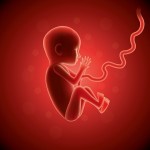 When Bill O’Reilly used the term “potential human being” to describe a human fetus in 2011, Catholic Online (among other journals) quickly corrected him. However, he evidently didn’t get the message, because he continued to use the term. Four years later, on May 28, 2015, he showed a letter from a viewer objecting to the term and then chastised him, arguing that the term was less extreme than that used by many pro-life advocates and therefore a more effective way to advance the pro-life cause.
When Bill O’Reilly used the term “potential human being” to describe a human fetus in 2011, Catholic Online (among other journals) quickly corrected him. However, he evidently didn’t get the message, because he continued to use the term. Four years later, on May 28, 2015, he showed a letter from a viewer objecting to the term and then chastised him, arguing that the term was less extreme than that used by many pro-life advocates and therefore a more effective way to advance the pro-life cause.
What makes the issue important is the fact that O’Reilly has the largest audience on cable news, and whatever he says reaches around the globe. When he is right, as he often is, he does a great deal of good. However, when he is wrong, he at best sows seeds of confusion. And his use of the term “potential human being” is demonstrably wrong.
Perhaps he is vaguely recalling his Marist College instruction in Thomistic metaphysics and its treatment of potency and act. But that treatment is much too complex to bring any clarity to the discussion of abortion. In any case, in modern English the phrase “potential human being” means “something that is not yet human but could be in the future.”
Therein lies O’Reilly’s first problem. By logical extension, “not yet human” means not yet entitled to be treated as human. That classification of a fetus is hardly supportive of the pro-life position; it actually is a strong argument for abortion because if the fetus is not yet entitled to be treated as human, there need be no qualms about disposing of it.
A second and considerably more serious problem with the term “potential human being” is that it ignores science. (Ironically, O’Reilly intends his view to offer scientific support to the pro-life view.)
The following scientific facts are among the most relevant:
- Within twelve hours after conception, the new human genome is formed from the mother’s and father’s DNA.
- Over the next week the embryo forms and is implanted in the womb.
- The nervous system is formed by day 14; the heart beats by day 18.
- By the 8th week the embryo becomes a fetus; by the 22nd week, the fetus is able to live outside the womb; 14 weeks later, birth occurs.
Let’s now address the key question:
When is new human life first present in the womb? We could say at the moment when the new human genome is formed, but it would be more accurate to say at the moment of conception, which begins the process that forms the new genome. Since that process cannot produce anything but a human being—not a horse, for example, a dog, or a salamander—it is illogical to call the fetus a “potential” human being. From the moment sperm and egg unite, an actual human being is present.
There are, of course, other relevant questions, the most important of which is frequently neglected: At what point does the new human being become a person entitled to protection under the law? At conception? Implantation? First heartbeat? The fetal stage? Survivability outside the womb? Birth?
This ethical and legal question not only concerns the status of the new human being in society, but also, in a fundamental way, defines the character of the society. However, it can be meaningfully addressed only after we acknowledge the actual humanity of fetal life. That fact is what makes O’Reilly’s error so unfortunate.
Copyright © 2015 by Vincent Ryan Ruggiero. All rights reserved